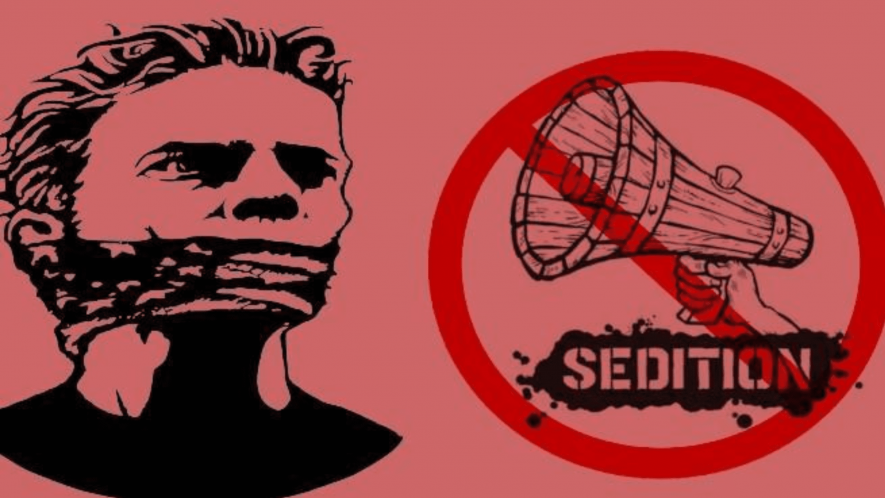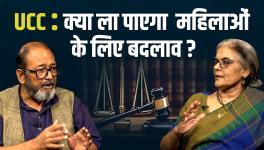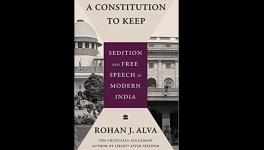History and Practice Define why India Doesn’t Need Sedition law

File Image
It was a leap of faith when India adopted its Constitution in 1949 and it came into force in 1951. Incredibly, more than 70 years later, it is walking down the path to pre-independence darkness. The recent Law Commission of India report on sedition is the newest signal of this backslide. The report, Usage of the Law of Sedition, supports retaining Section 124 A of the Indian Penal Code and enhancing the penalty therein. Its so-called sedition amendments, if implemented, would push the country back towards the late nineteenth century when sedition was re-inserted into the penal code.
Avowedly to combat those who may “excite disaffection” against the government, the British rulers reintroduced sedition in the penal statute in 1870 after its deletion a decade earlier. In 1897, MD Chalmers moved a Bill to give the general law on sedition a complete makeover, which came into its full draconian effect later through onerous judicial interpretations.
Proclaiming and penalising the offence of sedition mattered to Chalmers since he wanted to extract from the colonial subjects their unquestioned obedience. The sedition provision was, however, defined differently in India and England. Chalmers said, “Language may be tolerated in England, which it is unsafe to tolerate in India.” He believed the right to free speech in India resembled smoking a cigar near a gunpowder room. His racist and imperialistic constructs defined the historical genesis of sedition in India.
The 22nd Law Commission, formed for a three-year tenure, was virtually non-existent from February 2020 to November 2022. A chairperson, the former Chief Justice of the Karnataka High Court, Ritu Raj Awasthi, was appointed at the end of the commission’s tenure. It was a post-retirement job that drew controversy since Awasthi had also headed the bench that delivered the verdict in the Karnataka hijab ban case. Nevertheless, the tenure of the commission was extended until August 2024. Now, it is in the process of preparing recommendations on the Uniform Civil Code, a promise the Bharatiya Janata Party’s manifesto has featured for many years.
The present commission published only three reports, a very modest number, including the 279th one recommending retaining the contested sedition law. This provision was opposed tooth and nail by India’s tallest nationalist leaders during the colonial era, and its criticism has continued to date. In this context, in May 2022, the Supreme Court suspended the implementation of Section 124 A. This statute currently defines the punishment for any overt act that could encourage “rebellion against established order”.
The law commission’s proposed amendments seek to reintroduce all those interpretations of sedition which the courts transcended or bypassed in the interest of citizens and their right to freedom of speech and expression. The lynchpin of court verdicts was their interpretation of “disaffection” against the State. Recall that Chalmers took his interpretation from the Jogendra Chunder Bose verdict, after which many forms of disaffection emerged, ranging from ‘dislike’ to ‘hatred’, ‘contempt’ or ‘ill-will’ towards the State. In the Bal Gangadhar Tilak trial, disloyalty was construed as disaffection. Every such interpretation, currently subsumed under Section 124 A, was a part of Chalmers’ Indian Penal Code (Amendment) Act of 1898.
The Law Commission’s recommendation—a monologue, really—neglects the multiple discussions over the last few years that have highlighted the arbitrariness of holding on to any form of sedition law. It draws parallels with Chalmers’ controversial changes and says India ought to “incorporate” the logic of the Kedar Nath Singh verdict. It validates the Centre’s opinion that Kedar Nath Singh was well-considered. Its more expansive interpretation of sedition ignores the fact that an apex court judge also ruled in the same case that if sedition law were given a wider understanding, it would “not survive the test of constitutionality”.
The commission significantly expands the scope to penalise a mere inclination (or “tendency”) to incite violence or excite public disorder. That is, it exempts the State from the need to prove actual violence occurred. And it recommends inserting the ratio of Kedar Nath Singh, which speaks of penalising actions that have a “tendency to incite violence or public disorder”. This would broaden an already “very wide” definition of sedition, as the Centre admitted in the Rajya Sabha in March 2016.
The Law Commission side-steps the need to test the nature of sedition for arbitrariness. Kedar Nath Singh was the first-of-its-kind ruling to interpret sedition in independent India and construed sedition as necessary to balance public order and fundamental rights. The commission does not analyse how the apex court has interpreted “public order”, nor that it wore the hat of a legislator and ignored previous contrarian judicial voices on sedition. Furthermore, the Romesh Thapar precedent, set by a six-judge bench, was unconventionally overturned in Kedar Nath Singh by a five-judge bench. This, too, the commission overlooked when it made this case its benchmark.
While addressing the peculiarities of the punishment defined in Section 124 A, the Law Commission refers to the Fifth Law Commission report, which found the prison term defined for sedition as “odd”. That is, the prison term for sedition was either a life in prison or a three-year term (or just a fine) “and nothing in between”. Here, the commission has proposed the punishment to be made into a life term or a prison sentence of “up to seven years” and a fine. The rationale given is the courts will get greater flexibility in determining the severity of punishment based on the gravity and scale of the offence. But it does not coherently justify why the jail term is being enhanced from three to seven years on the lower end of the scale of gravity.
By advocating enhanced imprisonment, the commission’s stance reflects a retributive approach to justice. This incongruous position disregards the need for a rehabilitative and reformative criminal justice system. Remember that sedition cases deal, first and foremost, with acts that impinge on the freedom of speech and expression.
The report tries to absolve the political class of the charge of having abused the sedition law. Instead, it places the burden of interpretation of the statute on “the complicity of the police”. The blatant abuse of sedition is discernible today, as even those who organise protests and roadblocks to draw attention to basic demands from the State can attract the charge of sedition. A report published by Article 14 says 25 sedition cases were filed during the anti-Citizenship Amendment Act protests. Another 22 were filed after the Hathras gangrape, six during the farmer’s protest, and 27 after the Pulwama attack.
The commission makes the case to retain sedition but not convincingly enough to affirm its place in a democracy. It notes that sedition is required to safeguard India’s unity and integrity but fails to demonstrate how it is necessary to protect these. After all, there have been many arrests under this law, but the conviction rate is extremely low. Article 14 has found that 96% of sedition cases were filed after the BJP came to power in 2014, with a consistent 28% annual rise in cases up to 2020.
The Law Commission’s recommendations are inconsistent with other Supreme Court precedents, which sought to avoid the draconian aspects of the sedition provision. While on the one hand, Kedar Nath Singh has been placed in a limbo, the commission gravitates back to it. Every such deviation creates a troubling sense of inconsistency.
A pattern has emerged since the inception of sedition law in India. This law was meant to ensure the “obedience” of the colonial subject and stifle dissent. It is imperative to critically examine a law born in the historical backdrop of racism and colonialism.
In the Ram Nandan case, the Allahabad High Court overturned a sessions conviction for a speech given to a crowd of 200 people in which the plaintiff said, “Tyrants did not divide the country, but Jawaharlal Nehru turned out to be such a big traitor that he divided the country into two parts.” The High Court ruled that sedition became void once the Constitution came into effect. It referred to Nehru’s speech during the First constitutional amendment debate—on sedition—in which he referred to the provision as a “highly objectionable and obnoxious” law that “should have no place in India’s legal system”.
Yet the provision survives, even thrives, still urging us to reflect upon its implications. In 21st-century India, we must remind the State to reassess this contentious legislation based on practical and historical insights.
The author is a lawyer practising in Delhi. The views are personal.
Get the latest reports & analysis with people's perspective on Protests, movements & deep analytical videos, discussions of the current affairs in your Telegram app. Subscribe to NewsClick's Telegram channel & get Real-Time updates on stories, as they get published on our website.
























